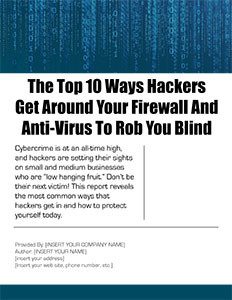Black Friday, Cyber Monday, and the accompanying avalanche of promotional emails are finally behind us. Which means it’s time to do two things: take a deep breath and assess the health of our  digital identity.
digital identity.
That’s easier said than done, of course. Strong passwords sure help. As do enhanced data security measures like two-factor authentication. But it takes more than one layer of online protection to deliver comprehensive security.
Instead, a multi-tiered approach is necessary — especially in the wake of the busiest online shopping period of the year. On Friday, November 29, 2019, online sales topped $7.4 billion dollars, the second-highest digital shopping day ever, according to Adobe. Small Business Saturday sales added up to more than $3 billion, while analysts expect Cyber Monday 2019 totals to flirt with $10 billion, which would be a sure-fire record.
In that consumer frenzy, it’s easy to forget about online common sense: what sites are safe to shop, what information we should and shouldn’t share, and what a proactive approach to cybersecurity looks like. That’s why Genie IT Services has collected the following 9 tips to protect your digital identity.
1) Look for the “s” in “https” in any e-commerce address.
No matter where you like to do your online shopping, always pay attention to the URL address, which should include an “s” after “http.” That extra character is critical, as it stands for “secure”— any data transmitted is sent through an extra layer of security like a secure socket layer (SSL) or transport layer security (TLS) protocol connection.
2) Beware of suspicious emails.
We all receive strange-looking messages from time to time — it’s how we react to them that matters. It starts simply, by examining the sender’s email address to confirm it’s from a legitimate domain name, or by spotting typos and grammatical errors in the body copy. The next level of protection involves hovering over web addresses without clicking on them to see whether the actual target URL matches the one displayed (beware of long strings of unconnected letters and numbers) and keeping an eye out for fake notifications from your financial institution, credit card issuer, or utilities provider.
3) Work with a trusted IT advisor to deploy software updates and security patches.
Many of the most potent digital attacks have exploited vulnerabilities in outdated operating systems. The irony is that, in many cases, those vulnerabilities could have been mitigated by a simple software update. A reliable partner can help your business deploy those updates and patches in a timely manner, avoiding downtime before it affects you and your employees.
4) Shop with credit cards for extra protection.
As opposed to debit cards, credit cards come with extra layers of security like 24/7 fraud monitoring and dispute procedures — not to mention the bonus points and cash back rewards that make holiday spending count. The best part about using a credit card, however, is that the charges don’t come directly from a bank account like a debit card charge does. In case of a data breach or related hack, that can make a huge difference.
5) Be careful with your private information.
It goes without saying that, in this data breach-obsessed day and age, any request for private information — like a Social Security number or credit card confirmation — should be met with immediate suspicion. Legitimate websites and apps never request such data via email or phone, but hackers are always looking for an opening to glean such important information.
6) Back up your data on a regular basis.
Whether it’s an accidental data leak or a purposeful data hack, there’s usually one layer of defense that can save the day: a regular, redundant, encrypted, and automatic data backup that provides a reliable point of recovery. This can be particularly important when on-site backups are affected by manmade or natural disasters, or when a virus like ransomware attempts to lock important data down.
7) Don’t click on any pop-up ads.
Irritating pop-up ads are a dime a dozen on the modern Internet. But one click can lead to a world of trouble, often redirecting an unsuspecting user to an illicit external site that installs malware or other viruses on your laptop, desktop, or mobile device. Beware of any viral-looking headlines or “too good to be true” offers, as well.
8) Be smart with your login credentials.
We all know the basics: create strong passwords and never use the same logins across multiple sites. But no matter how strong you think your passwords are, remember that hackers can test up to 10 billion password combinations in seconds. That’s why two-factor authentication, which requires you to enter your password and then verify your identity by entering a unique code you receive via text message or email, is equally important. And the secure password generators included in many all-in-one password management solutions can randomly create long, complicated passwords you’d never remember (and then remember them for you), sidestepping the old “password123” dilemma.
9) Implement strong security practices.
You can’t just assume that your employees will know how to spot phishing or ransomware emails — or that they will never click on an illicit web link or download a malicious attachment. That’s why specific policies and strong security practices need to be in place — and why employees need regular and recurring training about the nature of today’s cyber threats.
That’s particularly true in the wake of one of the busiest online shopping weekends of the year — if not all time. Your digital identity requires ‘round-the-clock protection, whether from active threats like hackers and ransomware or more passive pressures like malvertising and phishing.
Want to know more about the cybersecurity tips outlined above? Looking for more insight into online protection? Contact Genie IT Services today. We work proactively to protect your data, your business, and your digital identity.




